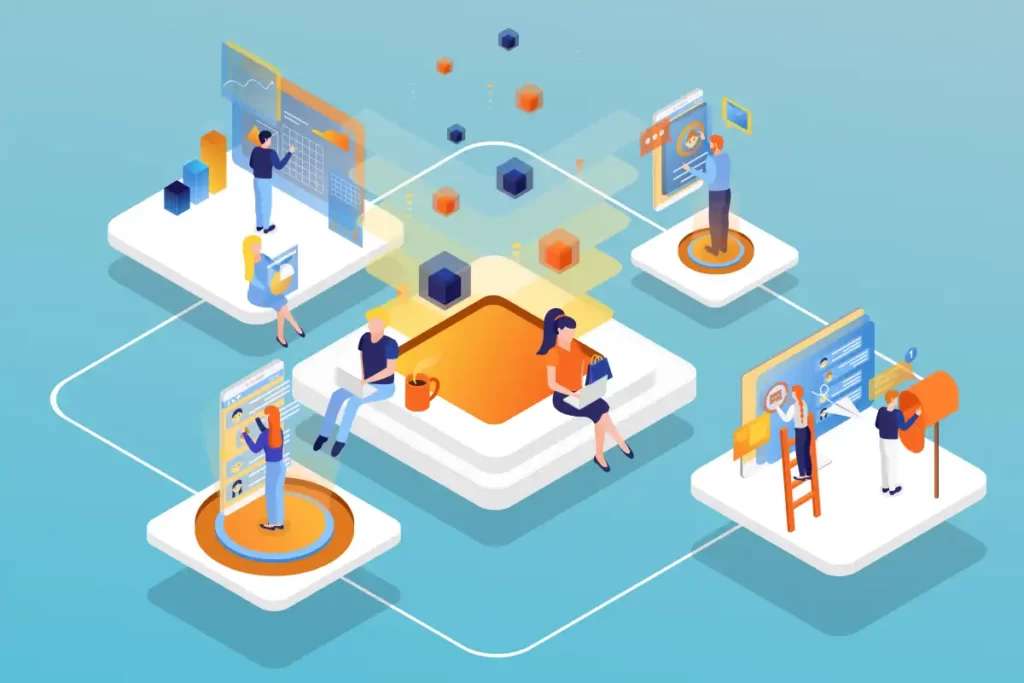Every so often, a tool emerges that reshapes the digital landscape, making us rethink what’s possible in web experiences. Enter Three.js. If you’re like it, the first time you encountered a website with jaw-dropping 3D graphics seamlessly integrated with the user interface, a mixture of awe and curiosity set in. That “how did they do that?” moment is often powered by none other than Three.js. As we delve deeper into this guide, we’ll pull back the curtain on this remarkable framework, uncovering the how and why of its capabilities. Prepare to be enlightened.
What is Three.js?
Explore the digital world and find a handy tool named Three.js. Think of it as a tool that makes 3D graphics easily, and also suitable for beginners to experts. Forget about the old days of needing extra software; Three.js is all about simplicity. Its user-friendly setup means you’re aware of technical talk but rather making cool things with ease. And if you ever need help, a big group of users are ready to offer advice and share their experiences. In the world of 3D web graphics, Three.js stands out.
Let’s have a quick look at the key features of Three.js.
- Open Source and Free: The beauty of open source! Three.js wears this badge with pride. This means anyone, yes, anyone, can dive into its code, tweak it, or even contribute. Free to use and modify, it invites a collective spirit of creation. Without shelling out a penny, you can harness its full potential. An artist’s dream.
- Browser Compatibility: The web is vast, with browsers aplenty. Three.js? It’s like that friendly neighbor who gets along with everyone! Whether Chrome, Firefox, or Safari, this framework ensures your visuals shine everywhere. A truly universal stage for your digital masterpieces.
- Zero Plugins required: Remember those pesky “Plugin Required” pop-ups? With Three.js, kiss them goodbye. It seamlessly integrates with your browser. No extra downloads, no annoying interruptions. Just pure, uninterrupted creative flow. How refreshing!
- High-Level API: Diving into 3D graphics can be daunting. But Three.js? It extends a friendly hand with its high-level API. It offers a gentle learning curve, even if you’re new to the 3D world. It’s like having a helpful guide in the vast landscape of digital visualization.
- Hyperactive Community Support: Ever felt stuck? The Three.js community is like a bustling town square. Enthusiasts, experts, and newbies, all mingling, sharing, and helping. Got a query? Throw it in, and watch the community come alive with solutions. You’re never alone on this journey.
Key Advantages of Using the Three.js Framework
The JavaScript ecosystem is overflowing with frameworks and libraries. Developers have tools for nearly every task, from ReactJS powering dynamic user interfaces to Node streamlining server-side operations. Amidst this landscape, Three.js has distinct advantages for those keen on web graphics.
-
WebGL Foundation for Cross-platform & Cross-browser Development:
As the digital world expands, a seamless user experience becomes vital. Three.js, with its firm foundation in WebGL, promises this uniformity. Much like React and Vue JS are transforming cross-platform user interfaces, Three.js is pioneering 3D graphics. Whether your audience is on a high-end desktop in Chrome or a mobile device using Safari, the visual output remains consistent. Just as ReactJS ensures every button and panel looks the same on different devices, Three.js ensures every 3D element shines uniformly. This consistent, high-quality performance sets it apart in the sprawling landscape of JavaScript libraries.
- Easier Access Thanks to Seamless Browser Integration:
In today’s fast-paced development environment, the simpler, the better. Remember the complexities of 3 tier systems? Three.js sweeps them away. There’s no jumping through hoops, downloading extra plugins, or battling compatibility issues. Its browser integration is as smooth as setting up a Node server or developing with React. With a straightforward approach, Three.js cuts down unnecessary development time and hurdles, allowing for a focus on creation and innovation.
-
Easier Learning Curve thanks to a Legacy of HTML and JavaScript:
While tools like Babylon JS or React JS have their own rules, Three.js stands out for its accessibility. Rooted in the foundational principles of HTML and JavaScript, it doesn’t push developers into a steep learning curve. If you’re familiar with basic web development concepts, diving into Three.js feels intuitive. It’s about making 3D graphics attractive. Newcomers can quickly feel at home, experimenting and crafting without being overwhelmed by heavy jargon or intricate processes.
-
Open-Source and Community-Powered Evolution:
The beauty of open-source libraries is their community-driven nature. Three.js, like React and Vue JS, thrives on the collective input of passionate developers worldwide. As the digital world evolves, so does Three.js. It’s not a static tool but a living, breathing entity, ever-improving and adapting.
Conclusion:
Three.js stands out in the vast world of JavaScript, much like how React and Vue JS shine in web development. Open-source full-browser compatibility makes it a first choice for 3D graphics. Its dynamic community, comparable to React JS and Vue JS’s communities, truly sets it apart and champions its evolution. As visuals dominate the digital domain, Three.js will undeniably play an important role in shaping that future.



